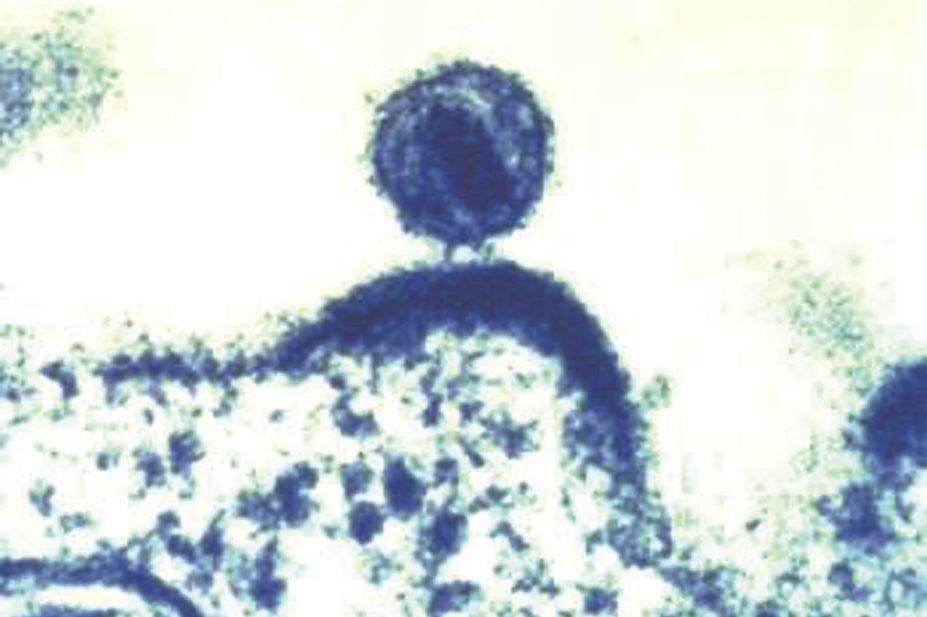
NIAID / Wikimedia Commons
Some people infected with HIV naturally produce broadly neutralising antibodies (bnAbs) against the virus. One strategy for vaccine development is to elicit the production of specific bnAbs from uninfected individuals, which would protect against HIV infection.
US researchers, reporting in Science (online, 13 May 2016)[1]
, studied an HIV-infected person who produced potent bnAbs, but they hadn’t yet been able to identify the region of the virus recognised by the antibodies.
By isolating the most potent bnAb from this person, they found that it binds to the viral fusion peptide of HIV-1. This region plays a vital role in allowing the virus to gain entry to cells by helping it fuse with the cell membrane.
The researchers say they are therefore exploring the fusion peptide as a new region of interest for HIV vaccine development.
References
[1] Kong R, Xu K, Zhou T et al. Fusion peptide of HIV-1 as a site of vulnerability to neutralizing antibody. Science 2016;352:828-833. doi: 10.1126/science.aae0474
You may also be interested in

Pilots to provide PrEP via pharmacies only ‘possible future opportunities’, report warns

PrEP highly effective in cutting HIV transmission but better access needed, study finds
